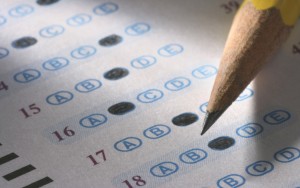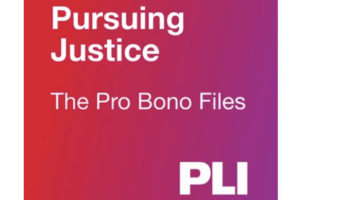 Four Times Square may no longer consciously look like the fictional Four Freedoms Tower, but you can’t really shake the feeling that something fantastic is in the air with a lobby filled with Skadden lawyers and models visiting Condé Nast. Meanwhile, through the building’s West entrance, the NASDAQ Marketsite provided a forum for ABA President Paulette Brown to deliver a short keynote about the legacy of Miranda and the future of law.
Four Times Square may no longer consciously look like the fictional Four Freedoms Tower, but you can’t really shake the feeling that something fantastic is in the air with a lobby filled with Skadden lawyers and models visiting Condé Nast. Meanwhile, through the building’s West entrance, the NASDAQ Marketsite provided a forum for ABA President Paulette Brown to deliver a short keynote about the legacy of Miranda and the future of law.
The event, hosted by MyCase (Brown was followed by our own columnist Niki Black of MyCase), seized on the recent observance of Law Day to reflect on the erosion of Miranda. So, not a cheery subject. She began the speech asking if we’d had too much to drink at the happy hour beforehand — apparently she knew ATL was there — and while no one was drunk yet, Brown gave everyone enough cause to drown their constitutional sorrows afterward.
To underscore the importance of the decision, Brown positioned Miranda at the heart of the fight against implicit bias, which she characterized as “corrosive to the pursuit of justice, fairness, and the integrity of the legal system.” For anyone still confused about implicit bias, Brown referenced the famous Written in Black and White test — which ATL covered here — where identical legal memos received wildly disparate criticism based on whether senior lawyers thought the author was black or white.

Pursuing The Pro Bono Story: A Conversation With Alicia Aiken
This Pro Bono Week, get inspired to give back with PLI’s Pursuing Justice: The Pro Bono Files, a one-of-a-kind podcast hosted by Alicia Aiken.
The most important lesson to take from that experiment is not that there are some racists in Biglaw, but that implicit bias is everywhere and that lawyers need to stop being afraid to admit it to themselves. Figure out your biases and then undertake the conscious effort to fight back against your unconscious. If you haven’t taken an implicit test, you should do so here. It’s a real mindf**k because biases you’d probably never imagine come out of the woodwork. I saw a public display of this test at the Utah State Bar Fall Forum last year from my fellow keynoter Kimberly Papillon (my speech covered the decidedly less heavy value of good press damage control), and the depths of biases, many forged as a toddler, are amazing to behold.
Brown encouraged lawyers of all stripes to take an implicit bias test. Given that prosecutors hold massive reserves of arbitrary power — Brown described them as holding more power than anyone else in the justice system — she feels it’s critical for these lawyers to take the time to identify their own often unconscious biases. But it’s not just prosecutors. Even the social justice warriors in the public defender trenches suffer from biases that can derail justice. We all know public defenders face massive workloads and too little time — how they manage their time can be fraught with implicit bias and do serious harm to justice.
And considering the lawyers are, Brown noted, less diverse than accountants, surgeons, and engineers, confronting explicit bias isn’t enough. African-American women make up less than 2 percent of partners and women of color generally only comprise around 2.5 percent.
No matter what corner of the legal world a lawyer occupies, implicit biases play a role. Stop being afraid to admit them. Diagnose yourself and get working on it. The profession depends on you.

AI + legal workflows: 5 plays that actually move the needle
Unsure where to start with AI? Learn 5 law firm workflows that can improve intake, conflicts, drafting, docketing, and time tracking—plus prompts, ethics tips, and steps for real ROI.
Project Implicit [Harvard]
Earlier: Proof That Typos Are Racist